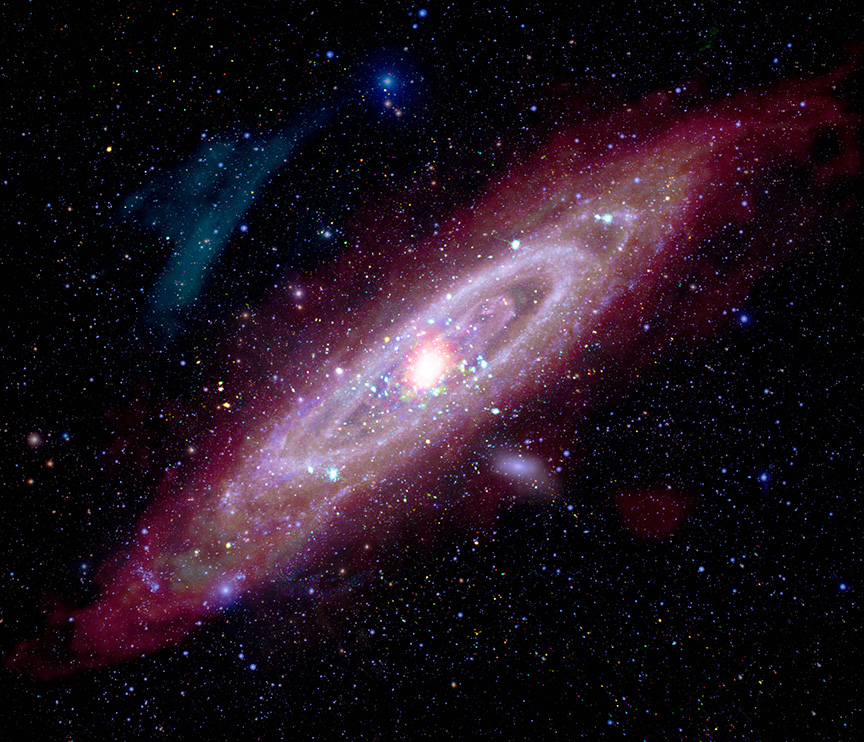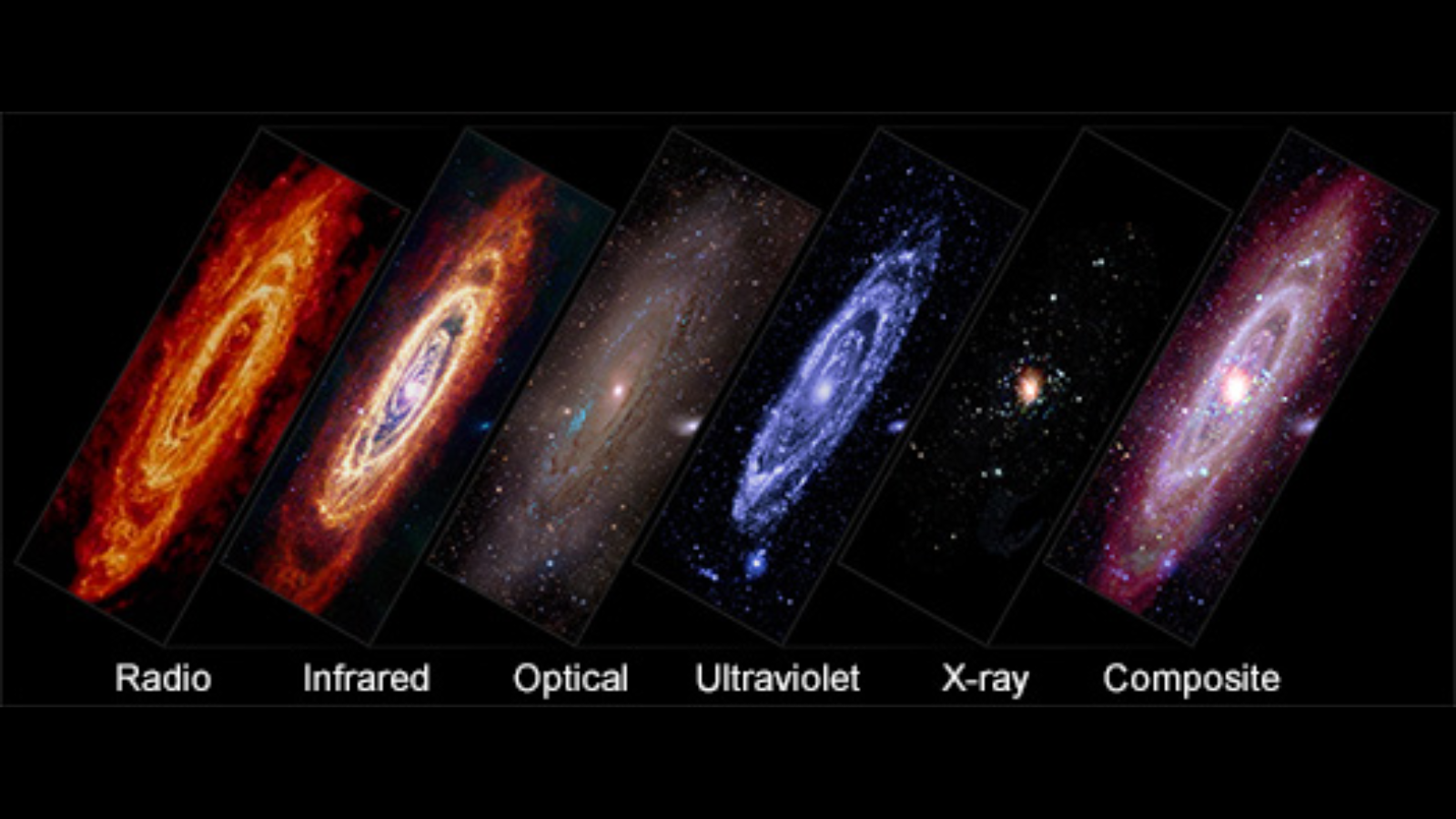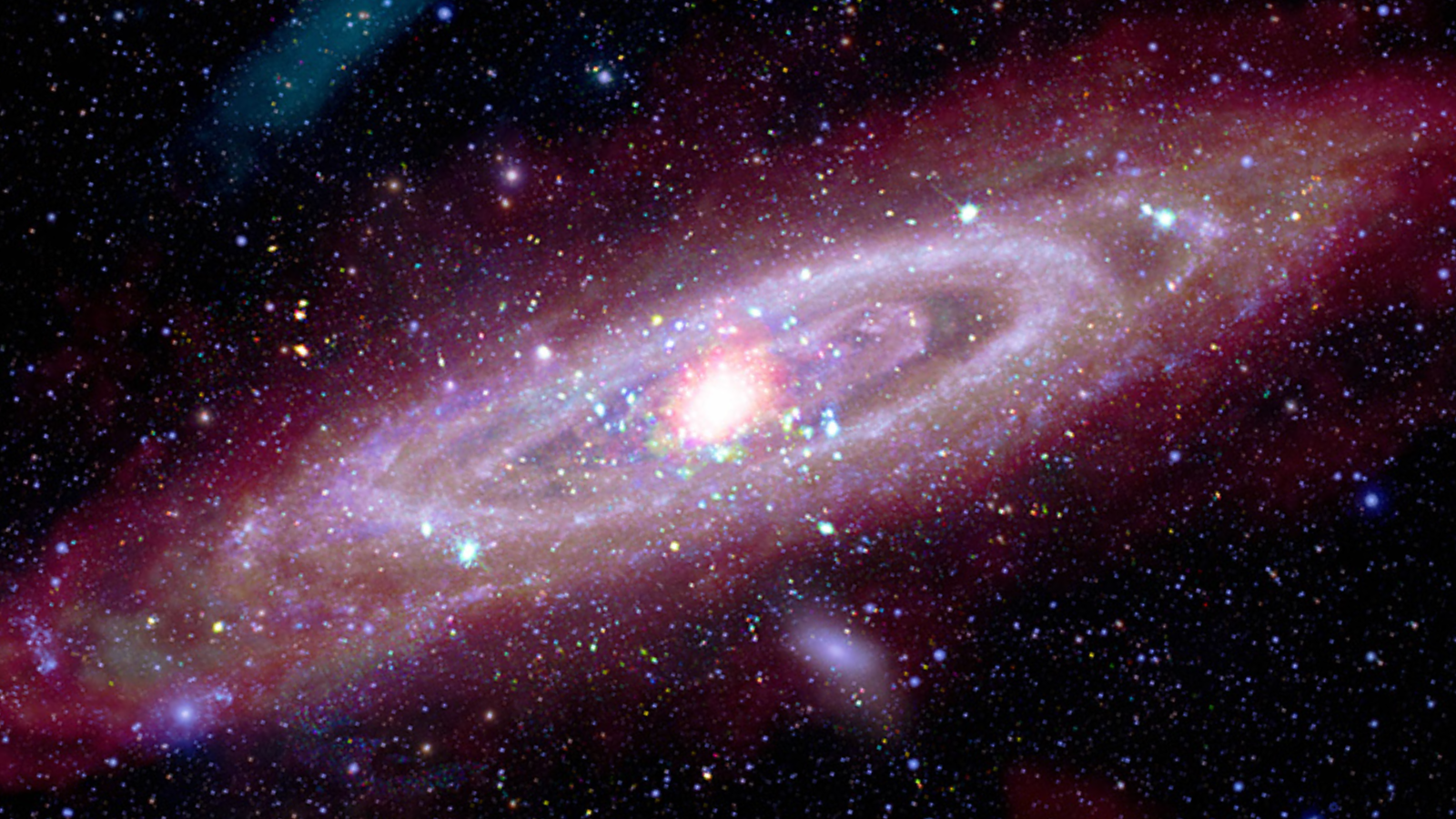The galaxy next door to the Milky Way, Andromeda, has never looked as stunning as it does in a new image from NASA’s Chandra X-ray telescope.
The image of the galaxy, also known as
Messier 31
(M31), was created with assistance from a range of other telescopes and ground-based instruments including the
European Agency
(ESA)
XMM-Newton
mission, NASA’s retired telescopes
GALEX
and the
Spitzer Telescope
as well as the Infrared Astronomy Satellite, COBE,
Planck
, and
Herschel
, in addition to radio data from the
Westerbork Synthesis Radio Telescope.
All these instruments observed Andromeda in different wavelengths of light across the
electromagnetic spectrum
, with astronomers bringing this data together to create a stunning and intricate image. The image is a fitting tribute to astronomer
Vera C. Rubin
, who was responsible for the discovery of
dark matter
thanks to her observations of Andromeda.

As the closest large galaxy to the Milky Way, at just around 2.5 million light-years away, Andromeda has been vital in allowing astronomers to study aspects of galaxies that aren’t accessible from our own galaxy. For example, from inside
the Milky Way
, we can’t see our galaxy’s spiral arms, but we
can
see the
spiral arms
of Andromeda.
Every
wavelength of light
that was brought together to create this incredible new image of Andromeda tells astronomers something different and unique about the galaxy next door.
For example, the X-ray data provided by
Chandra
has revealed the high-energy radiation released from around Andromeda’s central
supermassive black hole
, known as M31*.

M31* is considerably larger than the supermassive black hole at the heart of the Milky Way, known as
Sagittarius A*
(Sgr A*). While our home supermassive black hole has a mass 4.3 million times that of the sun, M31* dwarfs it with a mass 100 million times that of the sun. M31* is also notable for its occasional flares, one of which was observed in X-rays back in 2013, while Sgr A* is a much “quieter” black hole.
What connects Andromeda and Rubin?
Andromeda was chosen as a tribute to Rubin because this neighboring galaxy played a crucial role in the astronomer’s discovery of a missing element of the universe. An element that we now call dark matter.
In the 1960s, Rubin and collaborators precisely measured the rotation of Andromeda. They found that the speed at which this galaxy’s spiral arms spun indicated that the galaxy was surrounded by a vast halo of an unknown and invisible form of matter.
The mass of this matter provided the gravitational influence that was preventing Andromeda from flying apart due to its rotational speed. The gravity of its visible matter wouldn’t have been sufficient to hold this galaxy together.
Since then, astronomers have discovered that all large galaxies seem to be surrounded by similar haloes of what is now known as dark matter. This has led to the discovery that the matter which comprises all the things we see around us — stars, planets, moons, our bodies, next door’s cat — accounts for just 15% of the “stuff” in the cosmos, with dark matter accounting for the other 85%. The finding has also prompted the
search for particles
beyond the
standard model of particle physics
that could compose dark matter.
Thus, there’s no doubt that Rubin’s work delivered a watershed moment in astronomy, and one of the most important breakthroughs in modern science, fundamentally changing our concept of the universe.
June 2025 has been a brilliant month of recognition of Rubin’s immense impact on astronomy and her lasting legacy. In addition to this tribute image, the
Vera C. Rubin Observatory released its first images
of the cosmos as it gears up to conduct a 10-year observing program of the southern sky called the Legacy Survey of and Time (LSST).
Additionally, in recognition of Rubin’s monumental contributions to our understanding of the universe, the United States Mint recently
released a quarter
featuring Rubin as part of its American Women Quarters Program. She is the first astronomer to be honored in the series.
Like this article? For more stories like this, follow us on MSN by clicking the +Follow button at the top of this page.







